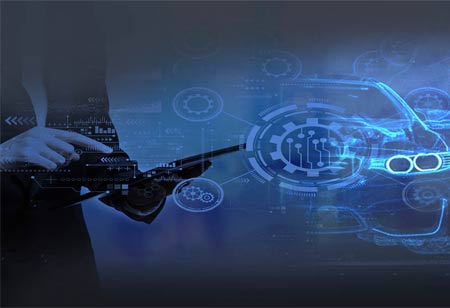Thank you for Subscribing to Auto Business Outlook Weekly Brief
The Role of Cybersecurity in Modern Vehicles
Modern vehicles are no longer just mechanical contraptions; they are now complex, computerized systems embedded with cutting-edge technology that enhances convenience, safety, and performance.

By
Auto Business Outlook | Wednesday, February 05, 2025
Stay ahead of the industry with exclusive feature stories on the top companies, expert insights and the latest news delivered straight to your inbox. Subscribe today.

Cybersecurity is critical for modern vehicles due to their increasing connectivity and complex computerized systems. While connected features offer convenience, they create vulnerabilities to cyberattacks that could compromise vehicle control, personal data, and road safety infrastructure.
FREMONT, CA: Modern vehicles are no longer just mechanical contraptions; they are now complex, computerized systems embedded with cutting-edge technology that enhances convenience, safety, and performance. With the rapid adoption of features like Advanced Driver Assistance Systems (ADAS), autonomous driving, and always-on connectivity, cybersecurity in vehicles has become paramount. Protecting these systems from cyber threats is crucial to ensuring the safety and reliability of modern vehicles.
Modern vehicles increasingly connect to external networks through the Internet of Things (IoT). Features like GPS navigation, real-time traffic updates, Wi-Fi hotspots, remote start systems, and over-the-air software updates rely on internet connectivity. While this connectivity enhances user experience, it also opens the door for potential cyberattacks by malicious actors.
Strengthening Cybersecurity in Connected Vehicles
As vehicles become increasingly connected, they face growing cybersecurity challenges. In-vehicle communication protocols, such as the Controller Area Network (CAN) and Local Interconnect Network (LIN), facilitate communication between vehicle components but lack inherent security measures. This makes them susceptible to cyber threats that can compromise vehicle functionality.
Similarly, third-party applications, including entertainment systems and software integrations, can introduce vulnerabilities if not adequately secured. Hackers can exploit weak security protocols in these applications to gain unauthorized access to critical vehicle systems. Telematics systems, widely used for fleet management and vehicle tracking, also present another potential entry point for cybercriminals. These systems can expose sensitive data or allow attackers to manipulate vehicle operations remotely if compromised.
The Critical Role of Cybersecurity in Vehicles
Cybersecurity is essential to ensuring the safe and reliable operation of connected vehicles. A successful cyberattack can lead to severe consequences. Compromised vehicle control is a significant risk, as hackers may gain access to essential systems such as brakes, acceleration, and steering, potentially endangering passengers and other road users.
Additionally, connected cars store vast amounts of personal data, including location history, driver preferences, and financial information. This data can be exploited for identity theft or other malicious purposes if breached. Cyberattacks also pose economic risks to automakers, leading to costly lawsuits, vehicle recalls, and reputational damage. Beyond individual cars, a compromised road safety infrastructure—such as manipulated traffic management systems—could result in widespread gridlock or even life-threatening accidents.
Measures to Strengthen Vehicle Cybersecurity
The automotive industry is implementing several key cybersecurity measures to address these risks. Advanced encryption technology secures in-vehicle communications and data transfers, reducing the likelihood of unauthorized access. By encrypting data, automakers can protect critical vehicle functions from cyber threats.
Real-time threat monitoring is another essential strategy. Modern vehicles have cybersecurity software that continuously scans for suspicious activity and responds to potential threats in real time. This proactive approach helps mitigate security breaches before they escalate.
Over-the-air (OTA) updates also play a crucial role in maintaining cybersecurity. Automakers can deploy software patches remotely to address vulnerabilities as soon as they are discovered, ensuring that vehicle systems remain secure. Multi-layered defense systems further enhance protection by incorporating firewalls, intrusion detection systems, and physical isolation of critical components to prevent unauthorized access.
Considerations for Consumers
Consumers must take proactive measures when using connected vehicles to enhance cybersecurity and safeguard personal data. Regularly updating vehicle software ensures that security patches and system improvements are applied, reducing vulnerabilities. Additionally, users should avoid connecting to public or unsecured networks, which can expose their systems to potential cyber threats. Exercising caution when integrating third-party applications—particularly those requesting access to sensitive personal information—can help prevent unauthorized data access and enhance overall digital security.
The role of cybersecurity in modern vehicles cannot be overstated. As cars become smarter and more connected, the stakes grow exponentially. While automakers and governments work towards robust solutions, staying vigilant and informed is equally crucial for consumers. Addressing cybersecurity is the only way to ensure safe, reliable, and innovative transportation systems for the future.






